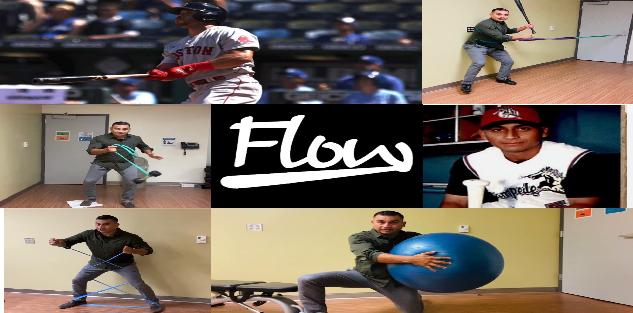-
- Baserunning
- Catching
- Coaching Baseball
- Drills
- Ebooks
- Fielding
- Fundamentals
- Hitting
- Mental Training
- Pitching
- Strength & Conditioning
- Umpiring
- Youth Baseball
-
- 3-3 Defense
- 3-4 Defense
- 4-2-5 Defense
- 4-3 Defense
- 6-Man
- Air Raid
- Analytics
- Blitz/Stunt/Pressure
- Coverage
- Defend this Offense
- Defensive Backs
- Defensive Line
- Drills
- Ebooks
- Eight-Man
- Flag Football
- Formation/Motion
- Fundamentals
- Game Planning
- Gap Schemes
- Inside Zone
- Kicking
- Learn from the Pros
- Linebacker
- Long Snapping
- Offense Breakdown - Pass Game
- Offense Breakdown - RPO
- Offense Breakdown - Run Game
- Offense Breakdowns
- Offensive Line
- Option/FlexBone
- Outside Zone
- Passing Game
- Pass Protection
- Play Action/Movement Pass
- Player Excellence
- Practice Planning
- Procedures/Tempo
- Program Development
- Quarterback Training
- Run and Shoot
- Run Game
- Running Back
- Run Pass Option (RPO's)
- Screen Game
- Single/Double Wing
- Situational Defense
- Situational Offense
- Slot T
- Special Teams
- Speed & Agility
- Spread Offense
- Strategy
- Strength & Conditioning
- Tackling
- Team Defense
- Team Offense
- Tight End and Fullback Training
- Tite Front
- Tools for Coaches
- Trick Plays
- Wide Receiver Skills
- Wing-T Basics
- Wing-T Passing Game
- Wing-T RPO
- Wing-T Run Game
- Youth Football
- Zone Runs
-
- 5 Out Offense
- Ball Handling
- Ball Screen Offense
- Certifications
- Clinics
- College Playbooks
- Culture & Team Development
- Defense
- Dribble Drive
- Drills
- Ebooks
- European Ball Screen Offense
- Fast Break/Secondary
- Fundamentals
- International Basketball
- Motion Offense
- NBA Playbooks
- Offense
- Packline Defense
- Playbooks
- Player Development
- Point Guard Training
- Post Play
- Practice Planning
- Press Defense
- Princeton Offense
- Read and React Offense
- Rebounding
- Shooting
- Situation/ATO Plays
- Strategy
- Strength and Conditioning
- Women's Basketball
- Workouts
- Youth Basketball
- Zone Defense
- Zone Offense
-
- Box Lacrosse
- Competition Drills
- Defensive Drills
- Defensive Strategy
- Drills
- Fundamentals
- Goalie Training
- Individual Defensive Play
- Individual Offensive Play
- Man Up and Man Down
- Midfielders
- Offensive Strategy
- Practice Planning
- Shooting
- Skill Development
- Strength & Conditioning
- Transition
- Women's Lacrosse
-
- Coaching Tennis
- Coaching Youth Tennis
- Doubles
- Drills
- Footwork
- Fundamentals
- Mental Game
- Serving
- Singles
- Strategy
- Strength & Conditioning
- Stroke Instruction
- Table Tennis
- Tips
-
- Coaching Track & Field
- Cross Country
- Discus
- Distance
- High Jump
- Hurdles
- Javelin
- Long Jump
- Mid-Distance
- Multi
- Pole Vault
- Relays
- Shot Put
- Sports Performance
- Sprinting
- Strength & Conditioning
- Triple Jump
- Weight/Hammer
-
- Attack
- Coaching Soccer
- Coaching Youth Soccer
- Defense
- Dribbling
- Drills
- Ebooks
- Fundamentals
- Futsal
- Goalkeeping
- Midfield
- Skill Development
- Strategy
- Strength & Conditioning
- Tactics
- Women's Soccer
-
- Coaching Hockey
- Defense
- Drills
- Goaltending
- Offense
- Off-Ice Stick Skills Training
- Player Development
- Strength & Conditioning
- Women's Hockey
- Youth Skills & Drills
- Golf
-
- Baserunning
- Catching
- Coaches Clinics
- Coaching Softball
- Drills
- Ebooks
- Fielding
- Fundamentals
- Hitting
- Pitching
- Strength & Conditioning
- Youth Skills & Drills
-
- Beach Volleyball
- Blocking
- Coaching Volleyball
- Defense
- Drills
- Fundamentals
- Hitting/Attacking
- Passing
- Serving
- Setting
- Strength & Conditioning
- Youth Skills & Drills
-
More Sports
- Archery
- Aussie Football
- Badminton
- Baseball
- Basketball
- Coach Development
- Cricket
- Cycling
- Disc Golf
- eSports
- Extreme Sports
- Fencing
- Field Hockey
- Football
- Golf
- Gymnastics
- Health & Fitness
- Hockey
- Lacrosse
- Martial Arts
- Mental Training
- Physical Education
- Racquetball
- Recreational
- Rugby
- Running
- Skating
- Skiing
- Snowboarding
- Soccer
- Softball
- Squash
- Student Athletes
- Swimming
- Team LMS
- Tennis
- Track and Field
- Ultimate Frisbee
- Volleyball
- Weight Lifting
- Wrestling
- Yoga
- Youth Coaching

Followers 6
Following 0
Dr. Ismael Gallo
Baseball Flows™
About
Dr. Gallo was drafted by the Los Angeles Dodgers in the 20th round of the 1996 draft. He played 5 minor league seasons finishing his career with a .300 batting average. After his professional baseball career concluded, Dr. Gallo received a bachelor’s in Kinesiology from California State University, Fullerton. Thereafter, Dr. Gallo enrolled in the Doctor of Physical Therapy program at Loma Linda University. In 2010, Dr. Gallo graduated from Loma Linda University. The following year he was accepted into the Kaiser Permanente Orthopedic residency program, which is a highly sought-after post doctorate program that is limited to 30 participants nationwide. For the past 10 years Dr. Gallo has been the sports specialist at Kaiser Permanente Riverside with emphasizes on baseball athletes. Dr. Gallo’s story is very inspirational because it is a prime example of how baseball can develop great life skills, which Dr. Gallo utilized to go from High School dropout to Doctor. Dr. Gallo’s passion for baseball and science led him to working with professional players the likes of Tommy Pham.
In my experience, I have found that baseball players are training very rigid movement patterns, which can be causing injury or inefficient performance. Having played baseball and studied the science and medical side at a high level, Dr. Gallo provides parents with a great filter of what can prevent injury and increase performance.
In my experience, I have found that baseball players are training very rigid movement patterns, which can be causing injury or inefficient performance. Having played baseball and studied the science and medical side at a high level, Dr. Gallo provides parents with a great filter of what can prevent injury and increase performance.
You should pick at least one course


